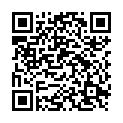|
|
|
| Module code: E504 |
|
3V+1U (4 hours per week) |
|
4 |
| Semester: 5 |
| Mandatory course: yes |
Language of instruction:
German |
Assessment:
Written examination
[updated 11.03.2010]
|
E504 Electrical Engineering, Bachelor, ASPO 01.10.2005
, semester 5, mandatory course
|
60 class hours (= 45 clock hours) over a 15-week period.
The total student study time is 120 hours (equivalent to 4 ECTS credits).
There are therefore 75 hours available for class preparation and follow-up work and exam preparation.
|
Recommended prerequisites (modules):
E104 Fundamentals of Electrical Engineering I
E203 Fundamentals of Electrical Engineering II
[updated 11.03.2010]
|
Recommended as prerequisite for:
|
Module coordinator:
Prof. Dr.-Ing. Dietmar Brück |
Lecturer:
Prof. Dr.-Ing. Dietmar Brück
[updated 11.03.2010]
|
Learning outcomes:
The module Signal and Image Processing aims to teach students how systems theory can be applied to tackle problems in image processing. Students will acquire a basic understanding of the key functions and concepts that underlie the interaction of hardware and software components in image processing systems.
Students will be in a position to understand and tackle a problem in optical quality control and to implement a workable solution. The focus of this module is on practical applications.
[updated 11.03.2010]
|
Module content:
1.One-dimensional signals in the time domain, mathematical description,
representation of the corresponding spectra, terminology of filters and
filtering, transition to discrete signals and discrete spectra, sampling, FFT
2.Two-dimensional signals, extending the mathematical theory
3.Images as two-dimensional signals in the spatial domain
4.Image processing algorithms in the frequency domain
[updated 11.03.2010]
|
Teaching methods/Media:
Overhead transparencies, lecture notes, video projector
[updated 11.03.2010]
|
Recommended or required reading:
At the beginning of the course, students will be issued with a CD containing all the teaching material used in this module. The CD also contains a complete and regularly updated list of recommended reading materials. As the teaching materials are partly in German and partly in English, international students with a good command of English should therefore be able to follow the lectures without difficulty.
Additional references:
R.C. Gonzalez, R.E. Woods, Digital Image Processing, Addison-Wesley, 1992
W.K. Pratt, Digital Image Processing, 2nd ed., Wiley, 1991
F.M. Wahl, Digitale Bildsignalverarbeitung, Springer-Verlag, 1989, (2. Aufl.)
A. Rosenfeld, A.C. Kak, Digital Picture Processing, Vol. 1+2, Academic
[updated 11.03.2010]
|


